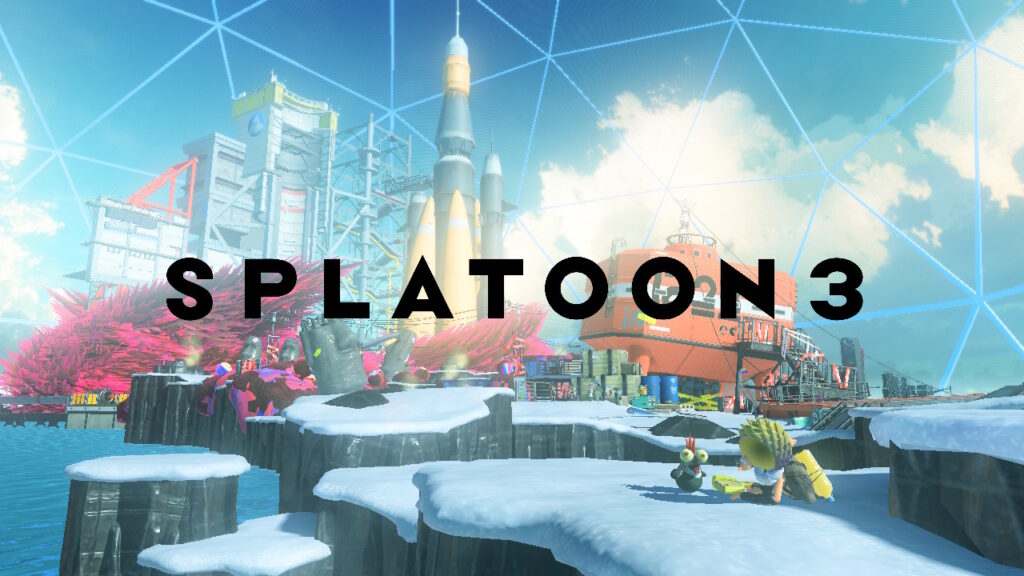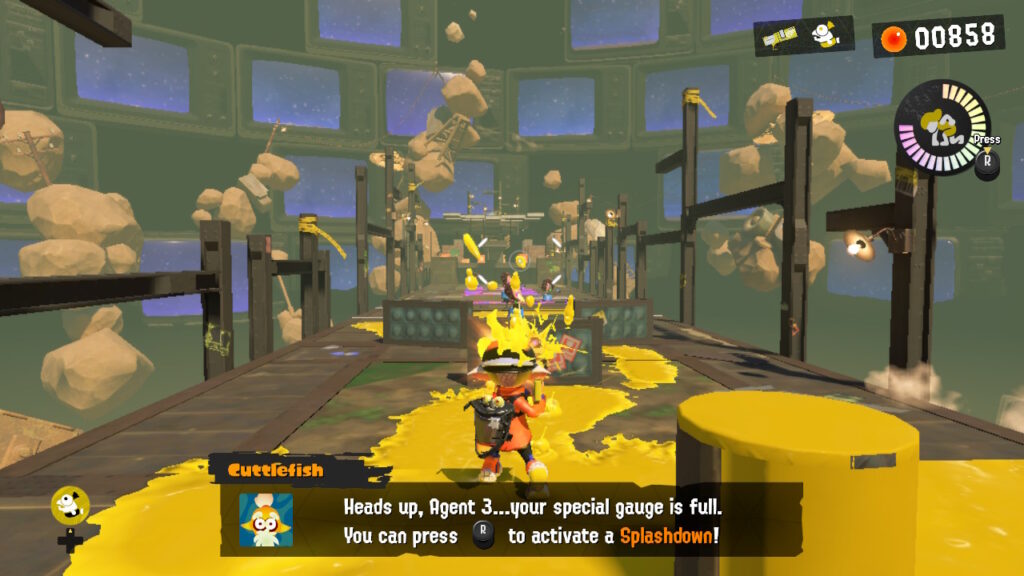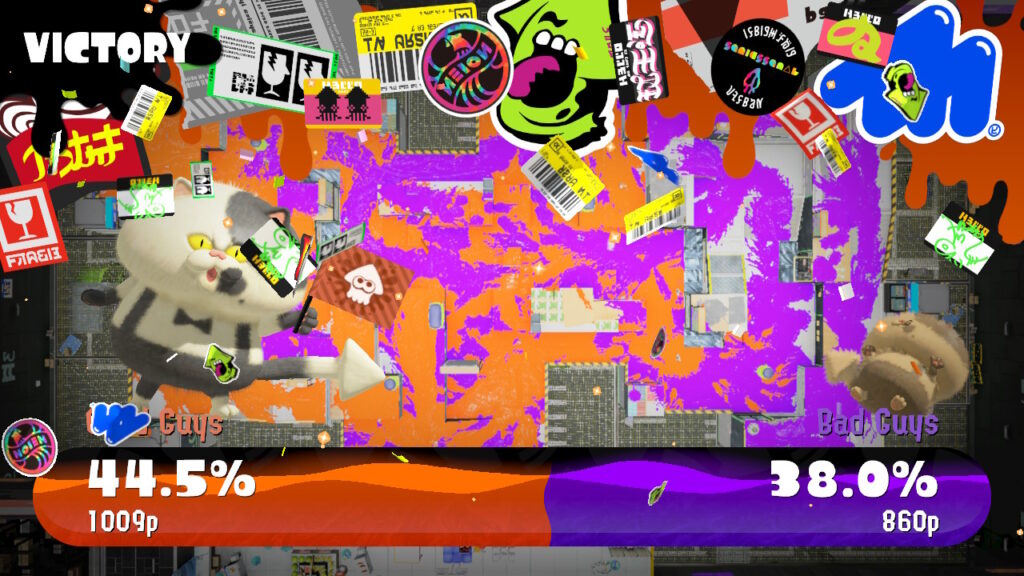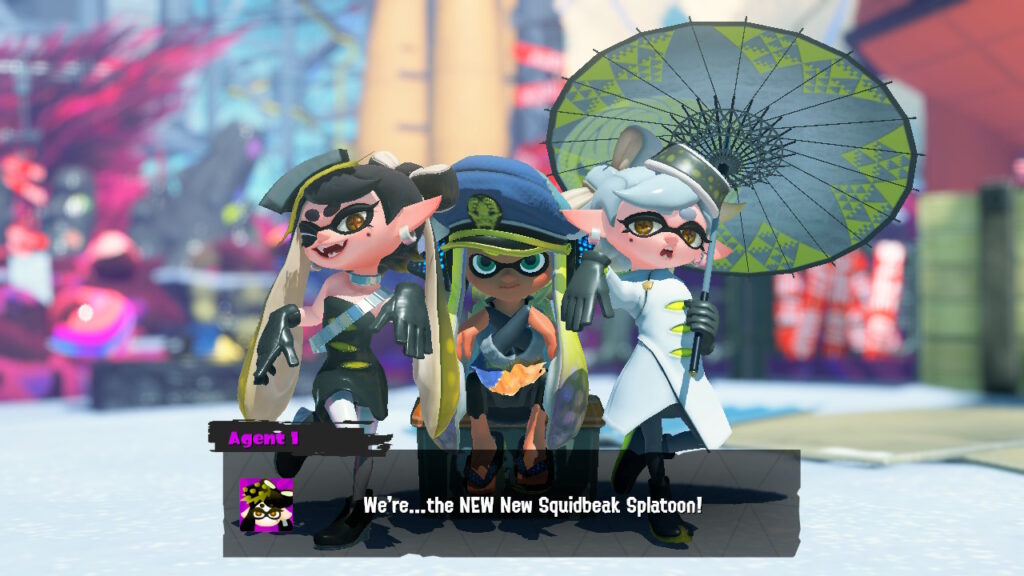
Developer: Nintendo
Publisher: Nintendo
Platform: Switch
Tested on: Switch
Splatoon 3 – Review
When the original Splatoon launched on the Wii U back in 2015, it was met with a healthy dose of criticism: Nintendo of all developers launching an online shooter? The critics were wrong and the game proved to be a massive success (for as far as that was possible on the Wii U’s abysmal install base). When Splatoon 2 hit the Switch two years later, it was even more successful and the IP cemented itself as one of Nintendo’s mainstays. Five years have passed since Splatoon 2 launched, and the game has seen continued popularity -not in the least thanks to the Octo Expansion DLC- but Nintendo decided that it was time for the next step in the IP’s life. Enter Splatoon 3, the latest and hopefully greatest entry in the ink-shooting turf war franchise.
Story
The meat of Splatoon has always been in its online gameplay, although each entry has also included a single-player campaign with a story attached. These have always felt more like an afterthought than anything else, and although more effort was put into Splatoon 3’s story than in the previous two entries, there still isn’t a whole lot of depth here. Splatoon 3’s campaign sees players step into the kicks of Agent 3 and his or her buddy Small Fry. They are tasked with tracking down the missing Zapfish, in order to prevent Splatville from running out of electricity. At first glance, it would appear that the nefarious Octolings from the previous games are behind the Zapfish’s disappearance, but soon enough it turns out that the real culprits are mysterious fuzzy creatures, known as Mammalians. That’s right, the mammals have returned to Splatoon’s post-apocalyptic world to reclaim their rightful place in the food chain! It’s now up to Agent 3 to stop this fuzzy threat…
Graphics
With its bright colors, instantly recognizable character designs, and distinct in-game brands, each with its own aesthetic, Splatoon 3 definitely nails its art direction. We could go on about what makes the visuals so great, but it all boils down to ‘Nintendo charm’. As we’ve seen with many of its other IPs, Nintendo knows how to perfect their designs, and Splatoon 3 sticks to what made the previous two games so good-looking and even goes the extra mile, with better-proportioned character designs and small changes to things like lighting to make the game look even better. We should mention that despite the game pushing the Switch to its visual limits, this does not hurt performance at all: there are no lengthy load screens and the game keeps a steady 60 FPS frame rate, even online.
Sound
Ever since the original Splatoon, music has always been a cornerstone of the world that Nintendo set out to create. Characters speak and sing in the fictional Inkling language, gibberish with a filter applied so that it sounds like they’re underwater. The catchy music tracks add tempo to the online matches, and the most prominent named characters in the game, the Squid Sisters, are a fictional band that has even put on “real life” holographic performances in Japan! Splatoon 3 obviously continues this trend, with new tracks as well as remixes of old ones -including the signature theme song ‘Splattack!’. It all sounds fantastic and ties everything together.
Gameplay
From the get-go, it’s clear that Nintendo’s philosophy with Splatoon 3 was “if it ain’t broken, don’t fix it”. What you’re getting here is, for the most part, the exact game as Splatoon and Splatoon 2, with the core experience in the online battles. There are various online modes of course, from the quintessential Turf Wars to the excellent Salmon Run. There is the aforementioned single-player campaign, which is for all intents and purposes a 3D platformer that implements Splatoon’s signature gameplay mechanics in increasingly creative ways. There is also a trading card-based mini-game, as well as a boatload of collectibles. It’s honestly a lot of content and the pace at which the game keeps throwing things at you can feel overwhelming at times. In essence, however, pretty much everything in Splatoon 3 is a variant of what you can do with the same mechanics, (apart from perhaps that card-based mini-game): as a kid, you shoot ink that damages enemies and creates colored areas that you can swim around in at high speed when you transform into a squid. Simple, really.
In all honesty, it had been several years since we last booted up Splatoon 2, so when we were faced with Splatoon 3’s tutorial stage, we were impressed with how quickly we were familiar with the controls again. It’s a testament to how elegant and accessible these are. The button layouts and functionality remains the same no matter which mode you’re playing, and they feel equally natural when you’re playing online turf wars as they do when you’re playing through the 3D platformer that is the game’s story campaign. Granted, we had to slightly adjust the sensitivity of the motion controls, but that’s a matter of personal preference. The motion controls are among the better ones we’ve encountered anywhere too, although they probably come across better in docked mode where you’re not physically tilting the screen that you’re actually playing on.
Splatoon 3 improves upon its predecessors in pretty much every single way -not through innovation but by fine-tuning what already existed. Controls feel tighter and more responsive. Weapon loadouts are rebalanced and new ones are introduced. The new maps are fantastic as well, feeling like they offer more tactical options compared to previous offerings. There have been improvements to the game’s online interface as well. This includes a much-needed change from the static lobby from the previous games: there is no multitude of menus to navigate through just to get an online match going. Instead, queueing happens at the press of a button. You can practice with your gear in the lobby too and setting up teams with friends has also never been easier. Matchmaking is done based on your character’s level, so you’ll be matched with players at supposedly similar levels of skill. This prevents new players from being overrun by diehards that spend entire evenings and weekends doing nothing but playing Splatoon. Nintendo often takes flak for their online services but Splatoon 3 shows what the big N is capable of.
That said, it’s not all praise. One issue we had to deal with involved online stability: specifically, we encountered instances of matches dropping or connection issues. Of course we can’t rule out that this had to do with server overload -especially during the game’s launch period- or even with our own internet connection. These issues aren’t as persistent as they were when we were playing Mario Kart or Super Smash Bros online during their launch period, so it seems that the network infastructure has improved compared to a couple of years ago. Additionally, Nintendo has already addressed that they’re looking closely at Splatoon 3’s online performance and that patches will be coming as necessary. We should also mention that if you’re going to want to get your money’s worth out of Splatoon 3 that a subscription to Switch Online isn’t a luxury but a necessity: the single-player experience, which can be played offline, simply isn’t worth the price of entry by itself. We imagine most adult Switch owners already have a subscription anyway but if you’re a parent looking to pick up Splatoon 3 for your kid, be aware of this hidden cost.
Subscription cost aside, it’s hard to beat the amount of bang for your buck here. Due to Splatoon 3’s online multiplayer nature, it’s easy to pour hundreds of hours into the various modes, and with themed Splatfests on the horizon, there’s always going to be something to do in the game. Nintendo is of course banking on this to be one of their ‘evergreen’ titles, just like Mario Kart or Super Smash Bros, games that have been out for years and still regularly make it into the Switch sales top 10. Granted, the arrival of Splatoon 3 means that Splatoon 2’s online activity is going to become as dead as a doorknob, making players feel like they are “forced” to upgrade. To the casual observer, this might seem like a quick cash grab: after all, there is no “major” new gimmick so why not simply add the new content as DLC? In practice though, there have been so many upgrades and adjustments that warrant Splatoon 3’s existence as a full new title. It’s just that these changes are incredibly subtle.
Conclusion
It was always a certainty that Splatoon 3 was going to be successful -the game became the fastest-selling Switch title in Japan during its launch weekend, selling 3.5 million copies- so it’s great to see that the game itself warrants that success. This is the definitive Splatoon title. If you’ve played either of the previous games, you already have a good idea of what to expect, just with a whole lot of polish on top. If you’re new to the franchise, there is no better time to get your ink on.
1 Comment
Leave a Reply
You must be logged in to post a comment.










[…] a year since Square Enix revealed their next big IP which made gamers go: “Wait isn’t this Splatoon?”. The 4V4 online shooter, titled FOAMSTARS, quickly got compared to the Splatfest by Nintendo […]